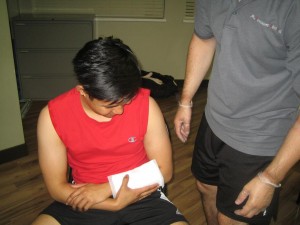In a year, the cases of animal bites reach a million. Majority of these animal bites usually occur on the fingers of the dominant hand but they can also occur in the neck and the head area.
Common causes of animal bites
In most cases, majority of animal bites are from dogs and this is followed by cat bites. Always take note that cat bites carries a higher risk for infection than bites from dogs.

A big issue when it comes to animal bites is the risk of rabies. Even though most pets are vaccinated in well-developed countries, rabies can occur from bites from wild animals such as bats, raccoons and skunks. On the other hand, bites from dogs are the most common source of rabies in less developed countries.
Symptoms of animal bites
Animal bites that do not cause a break in the skin can cause tearing and crushing injury to the underlying bones, tendons, muscles, ligaments and nerves. In case the skin is broken, it carries the risk for possible infection.
- Swelling
- Skin around the wound is warm
- Pain
- Pus discharge
- Area around the wound is red in color
If nerve or tendon damage is suspected, it includes the following indications:
- Loss of sensation on the finger tips on affected hand
- Inability to straighten or bend the finger on the affected hand
Diagnosing animal bites
A doctor must be contacted right away and informed how the bite was sustained. The wound will be thoroughly washed and signs of tendon or nerve damage are checked. The arm will be assessed if the signs of infection are spreading.
Treatment for animal bites
[youtube url=”http://www.youtube.com/watch?v=NsuGwUB8SZM”]For the immediate first aid measure, the area that was bitten should not be put in the mouth since it contains bacteria that can lead to an infection.
When it comes to wounds that are superficial, it should be thoroughly washed using water and soap or an antiseptic. Always apply an antibiotic cream and cover it with bandage. The bite should be observed for any signs of damaged tendons or nerves. In the span of 10 weeks, the wound should heal. If it does not heal or signs of infection or damage to the tendons or nerves are present, it is important to seek immediate medical care.
If bleeding is present, direct pressure must be applied to the affected area using a clean dry cloth and must be elevated. In case the area is not bleeding, it should not be cleaned. The wound must be wrapped using a clean sterile dressing and seek medical care right away. In case the wound is on the neck, head or face, always seek emergency help immediately. Do not forget to report the incident to the public health department so that the animal can be located and observed if it has the symptoms of rabies.
